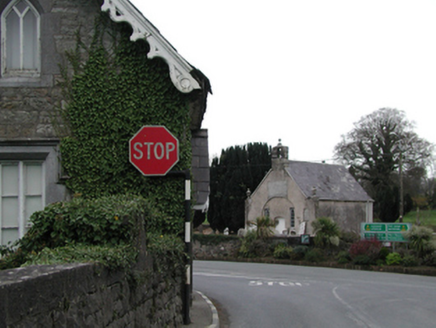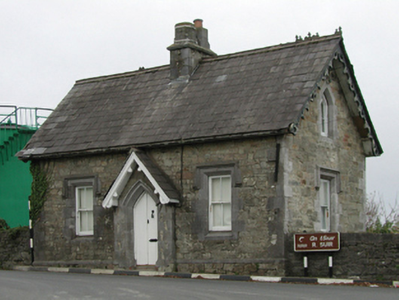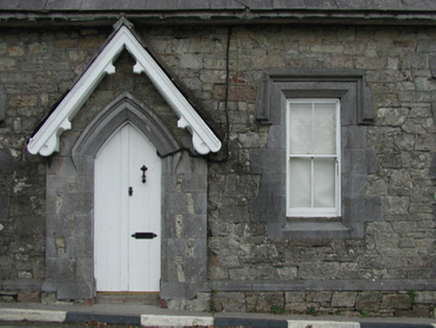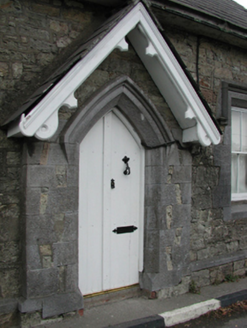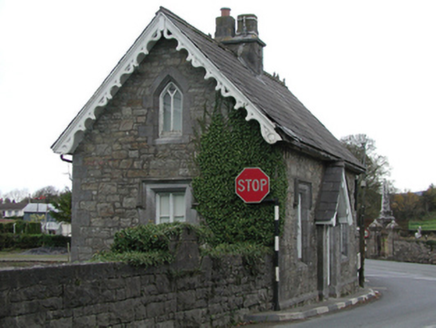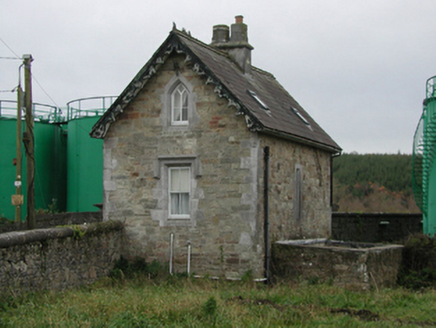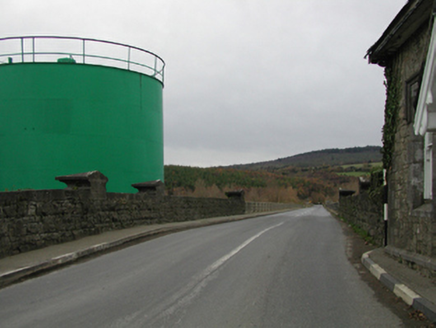Survey Data
Reg No
12327008
Rating
Regional
Categories of Special Interest
Architectural, Historical, Social
Original Use
Toll house
Date
1850 - 1855
Coordinates
246720, 119796
Date Recorded
05/07/2004
Date Updated
--/--/--
Description
Detached three-bay single-storey over basement toll house with dormer attic, built 1853, on a rectangular plan centred on single-bay single-storey gabled advanced porch. Occupied, 1911. Now disused. Pitched slate roof with trefoil-crested roll moulded clay ridge tiles, abbreviated cut-limestone central chimney stack on drag edged tooled cut-limestone chamfered cushion course on drag edged tooled hammered limestone base, decorative timber bargeboards to gables, pair of rooflights to rear (west) pitch, and no rainwater goods surviving on timber box eaves retaining sections of cast-iron downpipes. Part ivy-covered repointed snecked rubble stone walls on cut-limestone chamfered cushion course on plinth with drag edged tooled hammered limestone flush quoins to corners. Tudor-headed central door opening, drag edged tooled hammered limestone block-and-start surround having chamfered reveals with hood moulding framing timber boarded double doors. Square-headed window openings, drag edged tooled hammered limestone block-and-start surrounds having chamfered reveals with hood mouldings framing two-over-two timber sash windows. Lancet window openings (gables), drag edged tooled hammered limestone block-and-start surrounds having chamfered reveals framing timber casement windows. Road fronted.
Appraisal
A toll house representing an important component of the mid nineteenth-century built heritage of County Kilkenny with the architectural value of the composition, one erected by the Waterford and Limerick Railway (WLR) Company for the collection of tolls payable on crossing the adjacent Fiddown Bridge as legislated for under the Railways Act (Ireland) 1851, confirmed by such attributes as the compact rectilinear plan form centred on a windbreak-like porch; the construction in a blue-green fieldstone offset by "sparrow pecked" limestone dressings not only demonstrating good quality workmanship, but also producing a mild polychromatic palette; and the decorative timber work embellishing the roofline. A prolonged period of unoccupancy notwithstanding, the elementary form and massing survive intact together with substantial quantities of the original fabric, both to the exterior and to the interior, thus upholding the character or integrity of a toll house making a pleasing visual statement in a rural village street scene. NOTE: Occupied (1911) by John Flynn (----), 'Toll Collector' (NA 1911); and later the subject of the report "Paying the Price for Toll Bridge" (1967) by Bill O'Herlihy (1938-2015).
